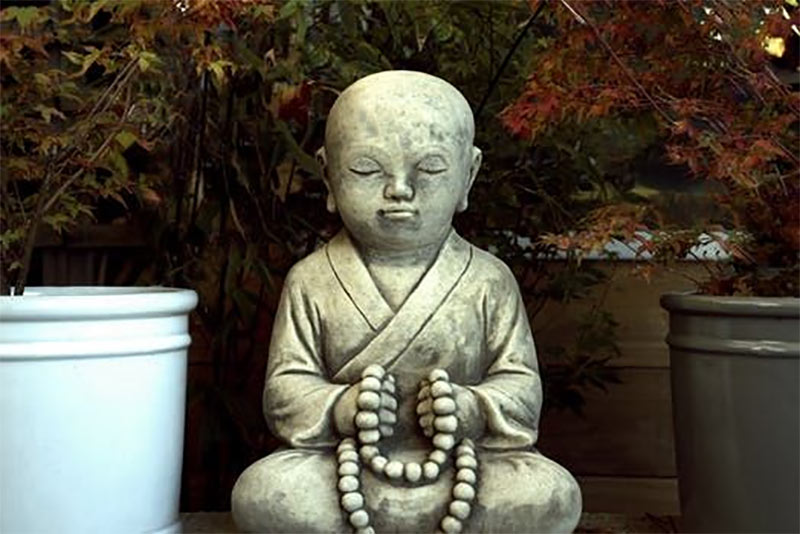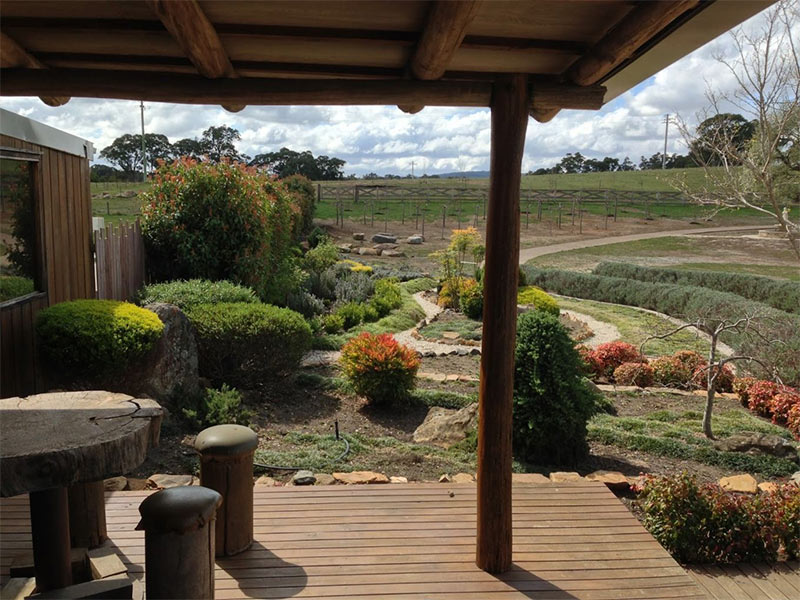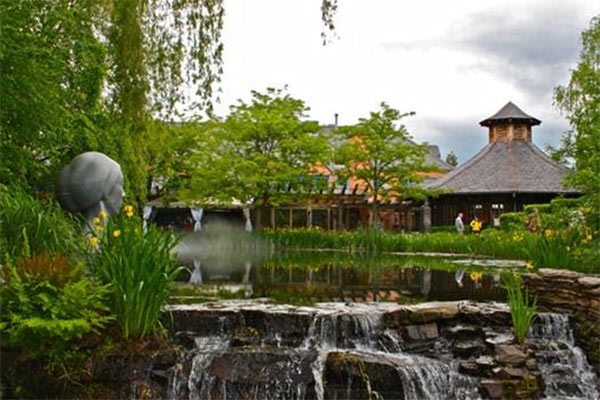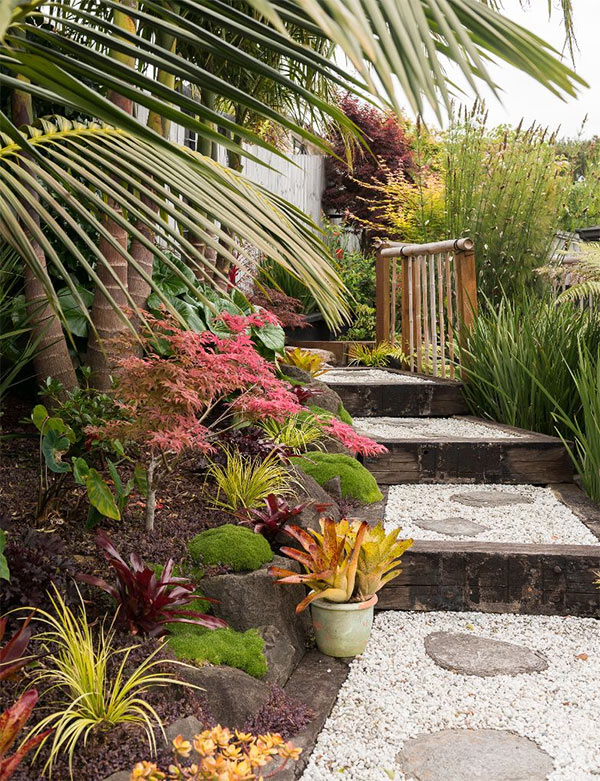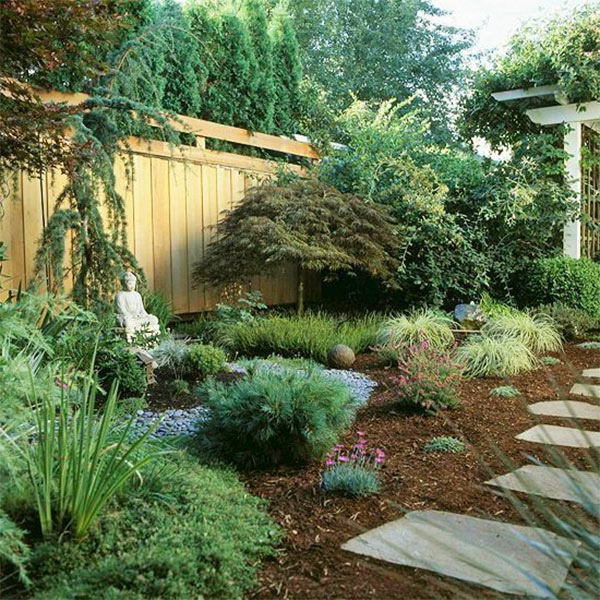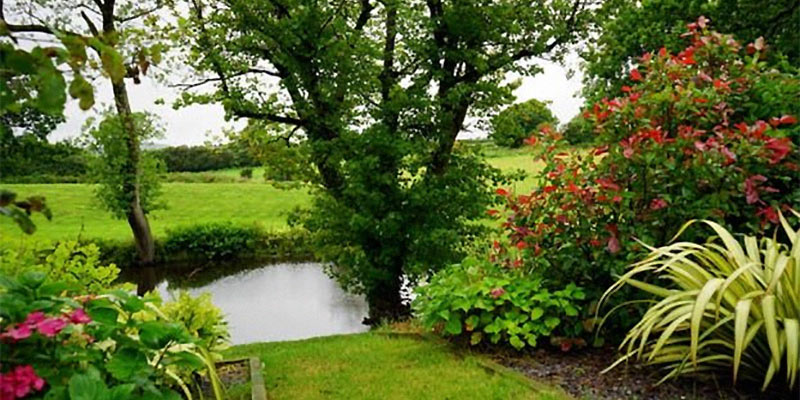
There are many types of Japanese gardens – from the austere rock Zen gardens to the natural and private tea gardens, to the more palatial strolling gardens of Edo and earlier periods.
No matter the period and school of thought, all Japanese gardens have something in common: they were designed for rest, peace and thoughtfulness. Do you think you need those things in your busy life? Read on!
You don’t need to raze your whole gardenscape in order to provide yourself with a serene corner to escape to. All you need to do is to set aside a corner of your garden, however small, and get to work. If you need to invest is some new gardening tools, you can find home equipment reviews on sites like https://www.reviewertouch.com.
The purpose of a Japanese style garden is explicitly to give yourself the space to pause and meditate. It celebrates nature. Although it might seem a bit ascetic to Western eyes, it aims to extract the very essence of the natural and spiritual out of horticulture.
History of Japanese Gardens
Japanese gardens have imprinted themselves into western culture, and are a familiar sight in big cities and parks. They make us think of peace, tranquility: we associate them with meditation. Unlike any other type of garden, Japanese gardens were created with the thought of religious meditative fulfillment, not just to please our aesthetic sense.
Zen gardens are an ancient tradition that goes back hundreds of years, if not more. Before the spread of Buddhism that made its way to Japan from China, there is evidence of rock gardens at Shinto shrines going back before the 800’s.
The gardens made for the enjoyment of aristocrats and monks went through many incarnations – they were often very large, with waterfalls and bridges. People would enjoy boating and large events in these gardens. It was a landscape completely manipulated to fit the ideal form of beauty of the period.
The classic small, controlled Zen garden we think of today – with it’s neatly arranged rocks and features is from the Kamakura and Muromachi periods (1192-1573). This is when gigantic court palace went out of favor and the military became more powerful in Japan. Zen Buddhism made its mark on gardening.
The tea garden is also a forefront candidate when we think of Japanese gardens. They are known for “wabi”, or rustic simplicity. Here, every feature has a ritualistic meaning, and is meant for your thoughts to anchor themselves on certain points of the design. In present times they are often a feature of a larger garden.
Features and furniture
There are some key features that you might want to think about when designing your garden. But remember: less is more. You don’t want to create a distracting collection of knick knacks and sculptures. Here are some to choose from:
A stone lantern – this classic feature is a must for tea garden style landscaping. It goes well with such highlights as Japanese maples, stepping stone paths and a more natural setting that reminds us of the woods, the mountains and a simpler life.
Natural wood features – also an important part of a rustic tea garden, these must not be stained or painted. They have to look natural and naturally worn. A wooden gate or a simple bench fit into this category.
A fountain – water is a very important aspect of any Japanese style garden. While a lot of the grand gardens included ponds, a garden fountain is a great idea for the smaller urban spaces. The sound of flowing water clears the mind, and helps you relax after a busy day. You may want to consider natural materials for this, like a natural wooden basin, or a cast stone fountain.
A rock garden – this garden is not meant to be entered, and might actually be a feature within a larger garden. Most people are familiar with rock gardens. They feature a geometric basin of sand or tiny pebbles, raked in such a way to represent ripples in water. You can enjoy it by sitting at the edge and contemplating the landscape.
How to get started
However large or small your garden is, first, you need to clear your space. It’s a good idea to sit down at the drawing board first and draw out your plans, and where every feature will have its place.
If you have the space, think about creating an inner garden and an outer garden. This is a feature of most places that are meant for tea ceremonies, but can also be symbolic and peaceful for the purposes of meditation.
The outer garden serves as an entryway to the inner one – there usually is a place to cleanse yourself in between the two spaces, like a natural fountain or a small pond. Cleansing yourself is an important part of this ritual.
Build a small gate (this may be a symbolic one) in between the two gardens.
If you plan on installing a rock feature or a space with pebbles, make sure you prepare your base well. A base? You don’t want weeds sprouting up from between your perfectly arranged pebbles. You can must clean the ground well, make sure it’s level, and cover it with a black gardening fabric before spreading the pebbles. The black fabric will shut out any weeds trying to destroy your zen.
While a fountain might sound like an extravagance, there are a lot of affordable garden fountains to choose from. No need to dig a whole pond – you can easily hide this feature and enjoy the sound of running water, like a hidden stream. You can also opt for a simple rustic fountain or even a minimalistic bird bath to bring water into your space.
What plants should you plant?
Think about some plants that occur naturally in the mountainous regions of Japan, and you will have the perfect ingredients for your landscaping. Not sure what those are? Here are a few examples:
Azaleas – known for creating spectacular color patches in the mountains of Japan, Azaleas are shrubs that bloom pink to purple to white. They are easy to take care of and create a lasting effect – there are kinds that bloom most of the year.
Bamboo – bamboo is a great starter plant. It needs little moisture to survive, and is very forgiving to the beginner gardeners. It’s impressive and has that timeless modern look that goes well with simple gardens. This is a great pick if you’re concentrating more on the stones and geometry.
Cherry – a cherry tree, or even a few cherry trees are a great add if you have the space. There are many kinds, and you may want to go for some miniature options. But if you can spare the space, full size cherry trees not only provide an intense viewing experience when blooming, but also add cool shade to the garden later on in the year. Cherries are the perfect trees to remind you of the passing of time.
Hostas – leafy fireworks. Lush, low to the ground and producing very interesting flowers. There are different types of hostas, with different shades and patterns of leaves, ranging from vibrant green to almost silver. It is a great landscaping tool, especially if you mix and match a few different kinds.
An Oasis
While there are many different styles and types of Japanese gardens, the main benefit is the peace and serenity they bring. They also don’t require as much care as most Western style gardens. Once they are set up, they are meant to be enjoyed, not slaved over. If you prepare well, lining your rock garden beds and choosing your plants wisely, then you will be able to go home to a meditative natural oasis with only the occasional weed pulling.

